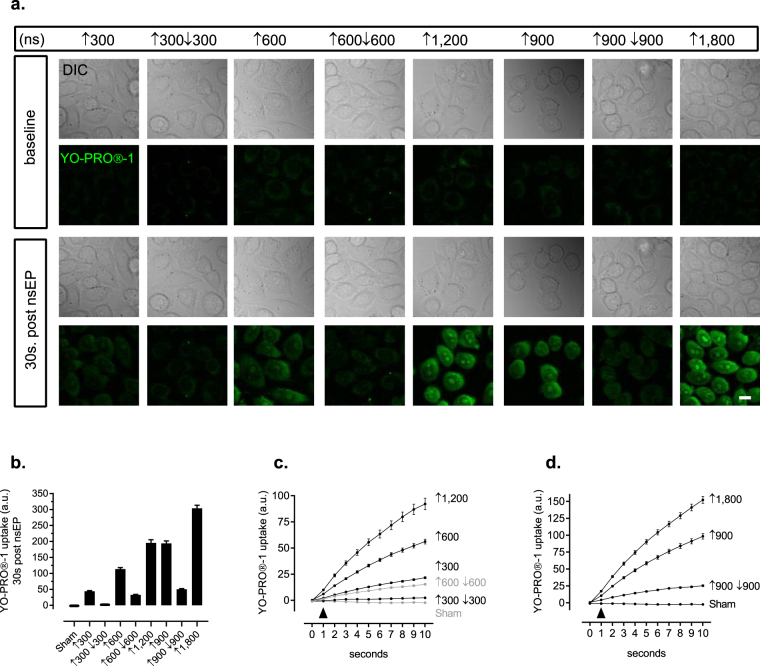Figure 2.
Symmetrical BP nsEPs that double the energized time of the front nsEP exhibit bipolar cancellation (BPC). (a) Representative differential interference contract (DIC) and confocal micrographs of Chinese Hamster Ovarian-K1 (CHO-K1) cells exposed to ↑300, ↑600, or ↑900 UP nsEPs, and symmetrical ↑300↓300, ↑600↓600, and ↑900↓900 BP nsEPs. The confocal micrographs represent YO-PRO®-1 fluorescence at baseline and 30 s post the nsEP exposure; scale bar 10 µm. (b) Quantitative assessment of YO-PRO®-1 uptake following exposure to UP and symmetrical BP nsEPs. In the plot, we evaluate YO-PRO®-1 uptake from UP nsEPs, and BP nsEP exposures that exhibit equivalent pulse durations (i.e. ↑300 ns vs. ↑300↓300 ns). As a control, we also measured YO-PRO®-1 uptake from UP nsEP exposures that have the same total energized time as the BP nsEPs (i.e. ↑1,200 ns vs. ↑600↓600 ns). Quantitative statistics- nsEP exposure, cells (N, cells): Sham (11,130), ↑300 (11,146), ↑600 (11,151), ↑900 (11,123), ↑1,200 (8,93), ↑1,800 (8,107), ↑300↓300 (11,129), ↑600↓600 (11,141), and ↑900↓900 (11,133). Statistical analysis of YO-PRO®-1 uptake 30 s post the nsEP exposure was determined with an unpaired two-tailed t-test, alpha = 0.05, p < 0.0001; (c,d) Temporal profile of YO-PRO®-1 uptake for 10 s following exposure to symmetrical BP nsEPs, and UP nsEPs. The zero point on the x-axis marks baseline YO-PRO®-1 fluorescence, and the black arrow head labels delivery of the nsEP. Nanosecond electric pulse exposures with similar temporal profiles are distinguished in gray to enhance contrast between the data sets.

